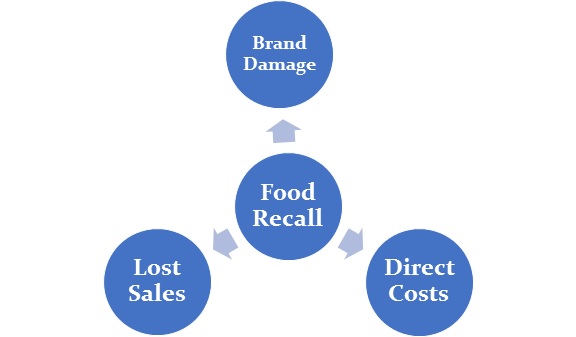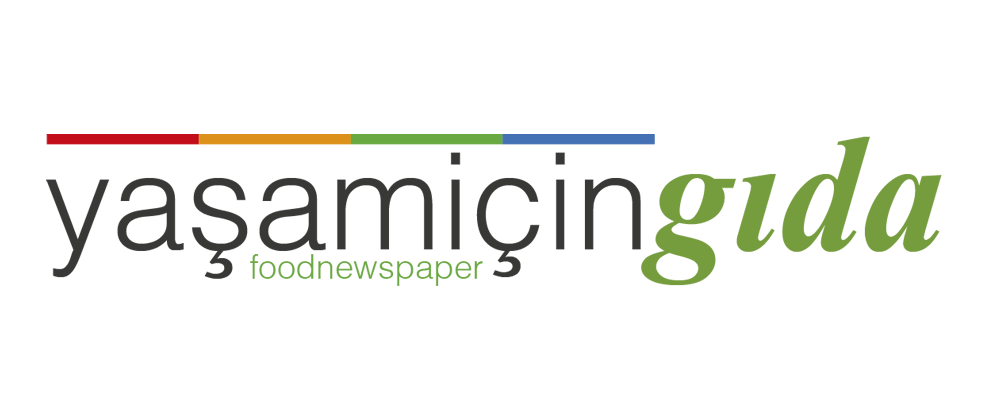
Today, food recalls can be a nightmare for a food manufacturing company. The social media and 24 hour rolling news can crash and damage the customer value. Therefore, it is an ever-growing concern for the food manufacturers. It can cost millions of dollars and untold reputational damage in the market share and customer loyalty.
Please note that the financial effects of the food recalls most severely impact small companies. Large companies and enterprises can sustain short-term effects and rarely suffer from long-term financial outcomes.
For example, food contamination costs USD 15.6 billion per year for US health authorities and 9 million Americans became sick from contaminated foods in 2013. The number of food recalls has almost doubled since 2002 in the US.
The financial cost of the food recalls for half of the companies were more than USD 10 million as a direct cost. It excludes the reputational damage This situation highlights the value of the risk transfer through insurance that protects the food manufacturers and suppliers.
Of course, globalised food supply chain, regulatory changes, decreasing profit margins, increasing competition and weakening in organizational alignment, experience and know-how due to the frequent changes in people; all are creating difficulties in risk management
Now, let’s look at the impact of recalls;
 FOOD RECALL IMPACT
FOOD RECALL IMPACT
These are the direct costs and typically include notification (to regulatory bodies, supply chain, consumers), product retrieval (reverse logistics), storage, destruction, unsaleable product, and of course, the additional labor costs associated with these activities as well as the investigation of the root cause. They do not include litigation costs, lost sales, and the impact to the company’s market value and brand reputation. In a survey, consumers indicated that 55% would switch brands temporarily following a recall, and 15% said they would never purchase the recalled product and 21% would avoid purchasing any brand made by the manufacturer of the recalled product.
I advise food companies how they can prevent food failures and recalls when I hold “Excellence in Leadership and Innovation Management for Food Manufacturing Companies” workshops to train and develop their managers and people.
We can classify food product recalls;
Labelling
Undeclared allergen:
Microbial contamination:
Foreign matter:
Tampering
Chemical/other contaminants
Biotoxin:
Other
The most common types of food product recalls are;
Mixed and/or processed foods
Meat and meat products
Dairy products
Others
My advice is based on avoiding food and drink product recalls include a multi-point plan.
Work with Truly Effective Leaders and Right People
Working with the well-experienced leaders who have excellent know-how and skills creates a competitive advantage for creating organizational alignment, great collaboration among the teams and successful risk management.
When I search on the internet I saw that an organic food producer recalled their products due to the Clostridium Botulinum toxin contamination in Canada. The main reason is the addition of the more water during the production according to the news. Another company in Europe recalled jars from the market due to the glass contamination. These issues show that the capability of the people is a key factor in today’s organizations. Normally, they had to detect these issues during the production process and in the factory.
When I worked in the supply chain, production and quality operations, we carefully checked and analysed each ingredient for contaminants, process parameters, process lines, possible risks, and finally ensure that the production conforms to the GMP rules and it is safe. Therefore, our products in the pharmaceutical industry and the food industry were safe and there was no failure in the factory or in the market.
Regularly Search on Risk Intelligence
You have to search domestic and global food recalls and define the root cause. Apply all of these valuable information in your supply chain to prevent failures and food recalls.
I want to share some food recall examples from markets:
Rice: GMO or lead contamination.
Infant milk: Cronobacter Sakazakii contamination.
Food jars: Glass contamination
Ice cream: Listeria, salmonella, E. Coli contamination
Cereals: Ochratoxin A, plastic, metal contamination.
Fruit juice: Pesticide contamination
Meat products: Microbial spoilage, undeclared meat contamination
Be Visible and Transparent
Your organization and people should know the label, ingredients, parameters, values, limits and regulations. Clearly write what you add and guarantee that you are transparent and ethical in your label information and product formulations to your organization and consumers.
Apply Regulations
Be sure that you know all details in the regulations and strictly apply the standards to assure the compliance of the food value chain from the field to the fork. Develop and implement food safety policies in accordance with the domestic and global standards.
Be Effective in Traceability
You have to be effective in traceability management and know the lifecycle of your products.
Be Alert in Allergens
You have to know your Ingredients. Today, healthy nutrition is being important and we know that some ingredients contribute allergic reactions to some people. Therefore, you have to be visible and transparent in managing the allergens in your supply chain. When I look at the food recalls in many countries, many recalls are due to the undeclared allergens in the food product. In 2014, 44% of the food product recalls were due to the undeclared allergens in USA.
Create Rigorous Labelling
Today, 40 percent of the consumers believe that supermarkets and food manufacturers provide accurate labelling on the food packaging. Increasing technology and scientific developments create an opportunity to identify what you add and not declared on the label.
Conduct Mock Recalls
You can conduct a mock product recall exercise at least once per year. So that you can minimise the risk of an expensive recall by carrying out a mock product recall exercise to test the effectiveness. Of course, the company has to define the recall team and the roles and duties of each recall team member and their leader.
Continue to Complete Regular Food Testing and Analysis
You have to ensure that your ingredients, bulk products and finished products are safe according to the regulations. Check the market, analyse the incidents and possible risks and be sure that you are on the right way. Monitor the processing lines. Use the right sampling methods. Take preventive measures to prevent physical, chemical and microbiological failures.
Control Your Supply Chain
You have to guarantee the quality of the products from suppliers. You have to test and calculate the possible risks before you supply. Today, many companies have a global supply chain. This creates advantages and disadvantages. Therefore, companies have to collaborate with the suppliers and regularly monitor their products, services, process lines and risks to them and take necessary actions to prevent product recalls. In other words, they have to know their food value chain from field to fork.
Apply an Effective Insurance Policy
Companies have to know the effectiveness of their insurance policy to help cover themselves if they face a product recall. Otherwise, they will face higher financial loses.
Develop and Implement an Effective Crisis Communication Strategy
Crisis communication strategy should be studied and practiced by the crisis committee and its leader. It should be managed in a professional manner.
I have to say that we are living in a social media age and 24 hour rolling news can crash and damage your business reputations within hours if something goes wrong in managing the crisis communication. Therefore, you have to practice crisis audits and media training through different crisis management tactics.
Result:
The leadership and top management have to reduce company exposure and create value through supply chain risk management in a proactive way by regarding the domestic and global regulations.
Establish robust governance by embedding risk management into core processes and creating a risk culture in the organization.
Define uncertainties and risks and implement a probabilistic scenario approach and take actions accordingly to prevent failures and recalls.
Work with the right and well-experienced leaders and truly effective people in your food value chain and create organizational alignment.
Use right sampling method and perform regular food testing and analysis.
Be visible, transparent and proactive in your supply chain, quality management system and food safety management!
Do you expect the unexpected? How do you prevent?

